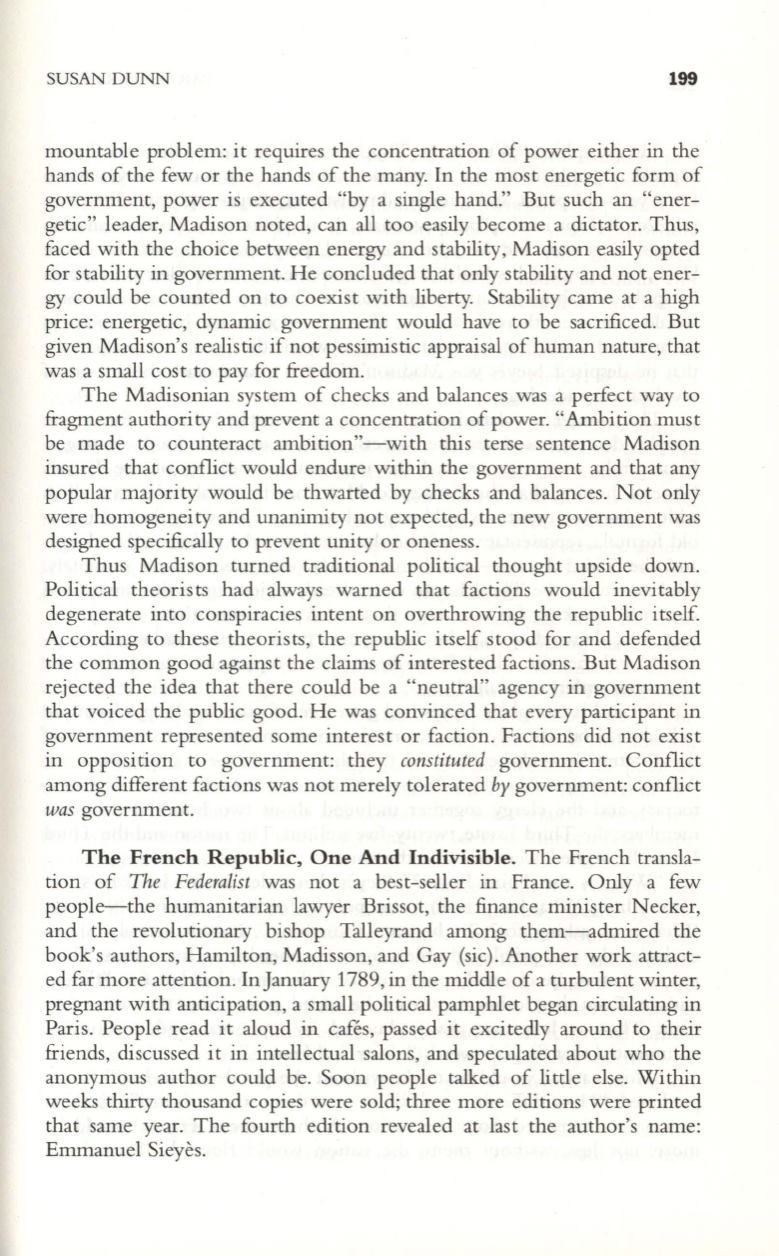
SUSAN DUNN
199
mountable problem: it requires the concentration of power either in the
hands of the few or the hands of the many. In the mos t energetic form of
government, power is executed "by a single hand." But such an "ener–
getic" leader, Madison noted, can all too easily become a dictator. Thus,
faced with the choice between energy and stability, Madison easily opted
for stability in government. He concluded that only stability and not ener–
gy could be counted on to coexist with liberty. Stability came at a high
price: energetic, dynamic government would have to be sacrificed. But
given Madison's realistic if not pessimistic appraisal of human nature, that
was a small cos t to pay for freedom.
The Madisonian system of checks and balances was a perfect way
to
fragment authority and prevent a concentration of power. "Ambition must
be made to counteract ambition"-with this terse sentence Madison
insured that conflict would endure within the government and that any
popular majority would be thwarted by checks and balances. Not only
were homogeneity and unanimity not expected, the new government was
designed specifically to prevent unity or oneness.
Thus Madison turned traditional political thought upside down.
Political theorists had always warned that factions would inevitably
degenerate into conspiracies intent on overthrowing the republic itself.
According to these theorists, the republic itself stood for and defended
the common good against the claims of interested factions. But Madison
rejected the idea that there could be a "neutral" agency in government
that voiced the public good. He was convinced that every participant in
government represented some interest or faction . Factions did not exist
in opposition to government: they
constituted
government. Conflict
among different factions was not merely tolerated
by
government: conflict
was
government.
The French Republic, One And Indivisible.
The French transla–
tion of
The Federalist
was not a best-seller in France. Only a few
people-the humanitarian lawyer Brissot, the finance minister Necker,
and the revolutionary bishop Talleyrand among them-admired the
book's authors, Hamilton, Madisson, and Gay (sic). Another work attract–
ed far more attention. InJanuary 1789, in the middle of a turbulent winter,
pregnant with anticipation, a small political pamphlet began circulating in
Paris. People read it aloud in cafes, passed it excitedly around to their
friends, discussed it in intellectual salons, and speculated about who the
anonymous author could be. Soon people talked of little else. Within
weeks thirty thousand copies were sold; three more edi tions were printed
that same year. The fourth edition revealed at last the author's name:
Emmanuel Sieyes.


